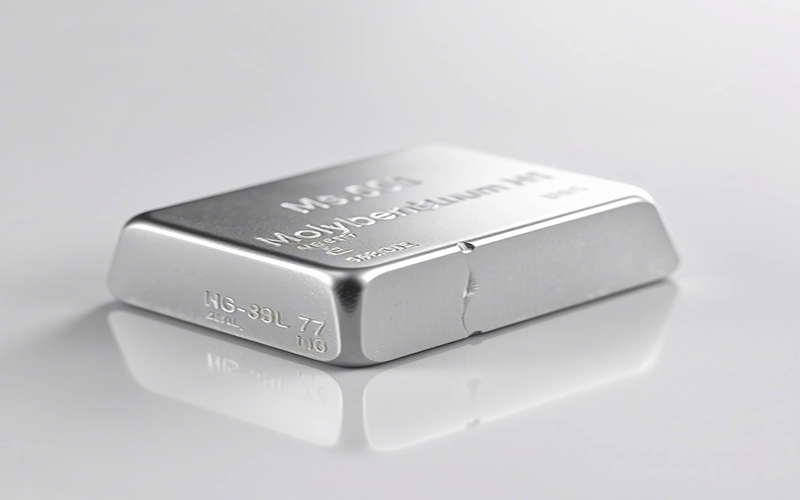Pure molybdenum is a silvery-gray, hard, and dense metal known for its exceptional strength, high melting point, and resistance to corrosion and wear. With a melting point of approximately 2,623°C (4,753°F), molybdenum is one of the highest-melting elements, making it ideal for use in extreme-temperature environments. It has a density of 10.2 g/cm³ and excellent thermal and electrical conductivity, which further enhances its value in various high-performance applications.
In its pure form, molybdenum is produced primarily through the reduction of molybdenum oxide (MoO₃) with hydrogen. The resulting powder is compacted and sintered into solid forms using powder metallurgy techniques, ensuring high purity and controlled microstructure.
One of the major advantages of pure molybdenum is its excellent mechanical strength at both room and elevated temperatures. Unlike many other metals, it maintains structural integrity and resists softening even under high thermal stress, which makes it a preferred choice in the aerospace and defense industries. It is used to manufacture aircraft and missile parts, rocket nozzles, and components for jet engines.
In the electronics industry, pure molybdenum is used as a material for thin films, electrodes, and semiconductor layers due to its stability and low thermal expansion. Its ability to maintain performance in vacuum or inert gas atmospheres also makes it ideal for use in high-temperature furnaces, as heating elements, crucibles, and shielding components.
Molybdenum is also widely used in the glass and lighting industries. It serves as an electrode in high-power lamps and as support material in flat-panel displays and solar panels. Its high strength and resistance to deformation ensure long service life, even under intense electrical and thermal loads.

Additionally, pure molybdenum is alloyed with other metals like titanium and zirconium in the medical and nuclear fields, where high corrosion resistance and low neutron absorption are critical. It’s also employed in chemical processing equipment that demands resistance to strong acids and bases.
Despite its strength and utility, molybdenum must be handled carefully, as it becomes brittle at low temperatures and can oxidize in open air above 600°C. To mitigate this, components are often coated or used in controlled environments.
In summary, pure molybdenum’s unique combination of high-temperature strength, conductivity, and corrosion resistance make it an indispensable material in modern technology and advanced manufacturing sectors.
Pure molybdenum is used in aerospace components, high-temperature furnaces, and electrical contacts due to its strength and heat resistance. It’s essential in the electronics industry for thin films and semiconductors, and in glass manufacturing for electrodes. Its durability also makes it valuable in nuclear and chemical processing equipment.

| Mo | K | Others |
|---|---|---|
| 99.9% min | 25ppm, max | 5ppm, max |

© 2013 Vertix Co. All Rights Reserved. Leading Supplier Of Foundry & Metallurgical Materials